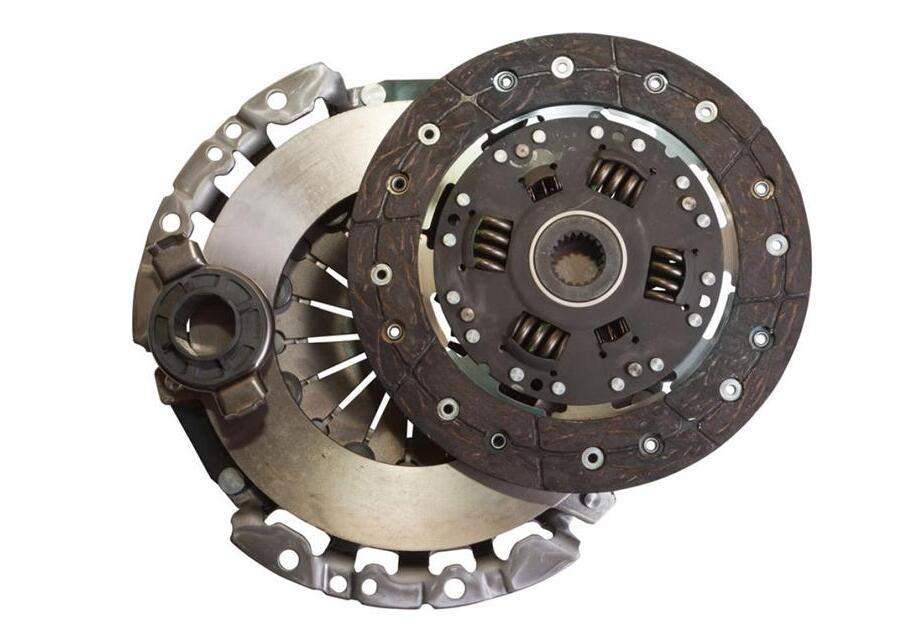Clutch principle and working process

Principle
For vehicles with manual transmission, the clutch is an important part of the vehicle power system, which is responsible for cutting off and connecting the power and engine. The clutch has become one of the most commonly used components when driving on urban roads or complex road sections. The quality of clutch application directly reflects the driving level and also plays a role in protecting the vehicle. How to use the clutch correctly, master the clutch principle, and solve problems under special circumstances is what everyone who drives a vehicle with manual transmission should master.
The so-called clutch, as the name implies, is to use "separation" and "combination" to transmit an appropriate amount of power. The clutch is composed of friction plate, spring plate, pressure plate and power output shaft, which is located between the engine and the transmission. It is used to transmit the torque stored on the engine flywheel to the transmission, so as to ensure that the vehicle can transmit an appropriate amount of driving force and torque to the driving wheel under different driving conditions. It belongs to the category of powertrain. In the case of semi-linkage, the speed difference between the power input end and the power output end of the clutch is allowed, that is, the transmission of appropriate power is realized through its speed difference.
The clutch is divided into three working states, namely, non-linkage when the clutch is depressed, full-linkage when the clutch is not depressed, and half-linkage when the clutch is partially depressed. When the vehicle starts, the driver presses the clutch, and the movement of the clutch pedal pulls the pressure plate backward, that is, the pressure plate is separated from the friction plate. At this time, the pressure plate is completely out of contact with the flywheel without relative friction. When the vehicle is running normally, the pressure plate is tightly pressed on the friction plate of the flywheel. At this time, the friction between the pressure plate and the friction plate is the largest, the relative static friction between the input shaft and the output shaft remains unchanged, and the rotational speed is the same. The last is the semi-continuous state of the clutch. The friction between the pressure plate and the friction plate is less than the fully continuous state. At this time, there is sliding friction between the clutch pressure plate and the friction plate on the flywheel. The speed of the flywheel is greater than the speed of the output shaft. The power transmitted by the flywheel is transmitted to the gearbox. In this state, the engine and drive wheel are equivalent to the soft connection state.
Generally speaking, the clutch plays a role in starting and shifting the vehicle. At this time, there is a speed difference between the first shaft and the second shaft of the transmission. After the engine power is cut off from the first shaft, the synchronizer can well keep the speed of the first shaft synchronized with the speed of the second shaft. After the gear is engaged, the first shaft is combined with the engine power through the clutch, so that the power can continue to be transmitted. In the clutch, there is also an indispensable buffer device. It is composed of two discs similar to the flywheel, with rectangular grooves on the disc and springs in the grooves. When encountering severe impact, the spring elasticity between the two brake discs interacts with each other to cushion external stimulation and effectively protect the engine and clutch.
Among the various accessories of the clutch, the strength of the pressure plate spring, the friction coefficient of the friction plate, the diameter of the clutch, the position of the friction plate and the number of clutches are the key factors that determine the clutch performance. The greater the stiffness of the spring, the higher the friction coefficient of the friction plate, the larger the diameter of the clutch, and the better the performance of the clutch.
working process
The diaphragm spring clutch can be divided into three processes: working, separating and engaging.
1.Workflow. When the diaphragm spring is installed between the clutch cover and the pressure plate, the pressure on the pressure plate caused by the pre-compression deformation will make the main and driven components of the clutch tight, that is, the clutch is engaged. The engine power is transmitted to the driven plate through the flywheel, clutch cover and pressure plate integrated with the crankshaft, and then to the input shaft of the transmission through the spline shaft sleeve of the driven plate. The working characteristics of this process are that the torque and speed transmitted by the driving and driven parts of the clutch are the same, there is no speed difference between the driving and driven parts, and there is no sliding wear.
2.Separation process. The driver presses the clutch pedal, the pedal moves to the left, the push rod moves to the left, and the diaphragm spring release plate moves to the left through the cylinder and the working cylinder. Affected by this, the diaphragm spring uses the support pin fixed on the clutch cover as the fulcrum to move the big end to the right, while the pressure plate is pulled to the right by the release plate. Finally, there is a gap between the driven plate, flywheel and pressure plate, and the clutch is separated. At this time, the clutch release process is over.
The working feature of the clutch during the separation process is that the power and motion of the engine cannot be transferred to the driven plate after separation. The active part keeps pace with the engine speed, while the driven part drops rapidly.
3.Engagement process.The driver releases the clutch pedal, and the pedal returns to its original position under the action of the return spring, while driving the push rod and release bearing back. That is, the movement of the control mechanism in the engagement process is the opposite process of the separation process. When there is a reserved gap between the release bearing and the diaphragm spring release plate, and the diaphragm spring presses the pressure plate on the driven plate again, the engagement process ends and the clutch resumes its power transmission function.





















